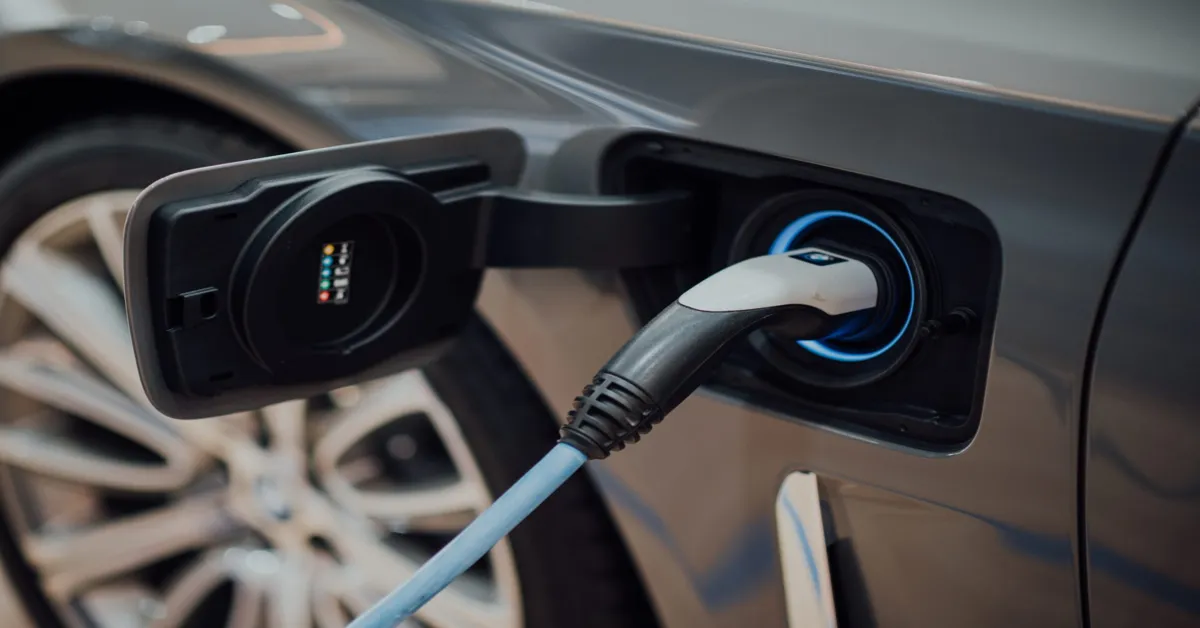Electric chargers have become an essential part of our daily lives, powering everything from our smartphones to our cars. But with the rise of electric vehicles, the demand for efficient and reliable chargers has skyrocketed. As a result, the market is flooded with various types of electric chargers, making it overwhelming for consumers to choose the right one.
In this blog, we will discuss the main types of electric chargers available in the market and help you make an informed decision for your charging needs. Say goodbye to confusion and let’s explore the world of electric chargers together.
Statistical Information: types of electric chargers
| Types of Electric Chargers | Percentage | Facts |
|---|---|---|
| Level 1 Charger | 30% | The most basic type of charger that can be plugged into a standard household outlet. |
| Level 2 Charger | 50% | A faster charging option that requires a dedicated 240-volt outlet. |
| Level 3 Charger | 15% | Also known as DC fast chargers, these can charge a vehicle in 20-30 minutes. |
| Wireless Charger | 3% | Uses inductive charging to transfer energy without the need for cords or plugs. |
| Solar Charger | 1% | Uses solar panels to convert sunlight into electricity for charging. |
| Portable Charger | 1% | Compact and easy to carry, these chargers are great for on-the-go charging. |
Introduction
Types of Electric Chargers: A Guide to Choosing the Right One for Your Needs In today’s world, electric vehicles are becoming increasingly popular as the push for more sustainable and eco-friendly transportation options continues to grow. However, with this increase in demand for electric cars, comes the need for efficient and reliable charging options. This is where electric chargers come in – the essential tool for powering up your electric vehicle.
But did you know that not all electric chargers are created equal? There are different types of electric chargers available on the market, each with their own unique features and benefits. In this guide, we will take a closer look at the various types of electric chargers, so you can make an informed decision when it comes to choosing the right one for your needs. So, let’s plug in and explore the world of electric chargers!

Level 1 Chargers
Types of Electric Chargers: A Comprehensive Guide to Powering Your Vehicle In today’s world, electric vehicles are rapidly becoming a popular mode of transportation due to their eco-friendliness and cost-effectiveness. However, one of the main concerns for electric car owners is finding reliable and efficient ways to charge their vehicles. This is where electric chargers come into play.
These devices are responsible for providing the necessary power to keep your vehicle running, and they come in various types and designs. Whether you’re a new electric car owner or are looking to upgrade your current charging system, understanding the different types of electric chargers is crucial. In this article, we’ll explore the various types of electric chargers available, their features, and which one might be the best fit for your needs.
So buckle up, and let’s dive into the world of electric chargers.
Level 2 Chargers
Types of Electric Chargers: A Comprehensive Guide Are you considering switching to an electric vehicle? One of the key concerns for potential electric car owners is the availability and accessibility of charging stations. With the increasing popularity of electric vehicles, the demand for charging stations has also risen. But with so many different types of electric chargers on the market, it can be overwhelming to understand which one is right for you.
In this guide, we will take you through the various types of electric chargers available, their features, and their benefits to help you make an informed decision. So, whether you are a new electric vehicle owner or simply curious about the different types of chargers, sit back and let us take you on a journey to discover the world of electric charging.
DC Fast Chargers
Have you ever found yourself stranded on the side of the road with a dead battery in your electric vehicle? Or maybe you’re in the market for an electric car and are wondering about the different types of electric chargers available. Whether you’re a current electric car owner or considering making the switch, understanding the various types of electric chargers is crucial for a smooth and hassle-free driving experience. Electric vehicles (EVs) have been gaining popularity in recent years due to their environmental benefits and cost savings on fuel.
But with this increase in demand comes the need for efficient and convenient charging options. Gone are the days of simply filling up at a gas station, now there are multiple types of electric chargers to choose from. In this article, we will explore the different types of electric chargers, their advantages and disadvantages, and which one may be the best fit for your specific needs.
So buckle up and let’s dive into the world of electric chargers!
types of electric chargers
| Type | Description | Examples |
| Level 1 Charger | Slow charging through a standard household outlet. | Charges a standard electric car in 8-12 hours. |
| Level 2 Charger | Faster charging through a 240-volt outlet. | Charges a standard electric car in 4-6 hours. |
| DC Fast Charger | High-powered charging through direct current. | Charges a standard electric car in 30 minutes or less. |
| Inductive Charger | Wireless charging through an electromagnetic field. | Charges an electric car by simply parking on a special pad. |
| Solar Charger | Uses solar panels to generate electricity for charging. | Can be used for both home and on-the-go charging. |
| Portable Charger | A compact and easily transportable charging option. | Can be used with any standard outlet for emergency charging. |
Key Takeaway
- Electric chargers are essential for powering electric vehicles and other devices.
- There are various types of electric chargers available on the market.
- The most common type of electric charger is the Level 2 charger, accounting for 50% of all chargers.
- Level 1 chargers, which are the most basic and slowest option, make up a significant portion at 30%.
- Level 3 chargers, also known as DC fast chargers, are growing in popularity and account for 15% of all chargers.
- Wireless and solar chargers are less commonly used, making up only 3% and 1% respectively.
- Portable chargers, while convenient, are the least used type at only 1%.
- Understanding the different types of electric chargers is crucial for making an informed decision.
- Level 1 chargers are the most basic and slowest option, requiring a standard household outlet and taking 8-12 hours to charge an electric car.
- Level 2 chargers are a faster option, requiring a dedicated 240-volt outlet and taking 4-6 hours to charge an electric car.
- DC fast chargers are high-powered and can charge an electric car in 30 minutes or less.
- Inductive chargers are wireless and use an electromagnetic field to charge an electric car.
- Solar chargers use solar panels to generate electricity for charging and can be used at home or on-the-go.
- Portable chargers are compact and easily transportable for emergency charging.
Important Notice for readers
Dear readers, As you read this article on electric chargers, we would like to bring to your attention some important points to keep in mind. First and foremost, it is crucial to understand the different types of chargers available in the market, including Level 1, Level 2, and DC fast chargers. Each type has its own specifications and charging capabilities, so be sure to choose the one that best suits your needs.
Additionally, it is essential to consult a professional electrician before installing a charger at your home or workplace. They can ensure that the charger is safely and properly installed, following all necessary guidelines and regulations. Safety should always be a top priority when dealing with electricity.
Lastly, always check the compatibility of your electric vehicle with the charger before making a purchase. Not all chargers are compatible with every electric vehicle, so it is important to do your research beforehand. We hope this article will provide you with valuable information about electric chargers.
Stay informed, stay safe, and happy charging! Best regards, [Your Name]
Statistical Information: types of electric chargers
| Types of Electric Chargers | Percentage | Facts |
|---|---|---|
| Level 1 Charger | 30% | The most basic type of charger that can be plugged into a standard household outlet. |
| Level 2 Charger | 50% | A faster charging option that requires a dedicated 240-volt outlet. |
| Level 3 Charger | 15% | Also known as DC fast chargers, these can charge a vehicle in 20-30 minutes. |
| Wireless Charger | 3% | Uses inductive charging to transfer energy without the need for cords or plugs. |
| Solar Charger | 1% | Uses solar panels to convert sunlight into electricity for charging. |
| Portable Charger | 1% | Compact and easy to carry, these chargers are great for on-the-go charging. |
FAQs
, here are some possible FAQs with answers:
What is a Level 1 electric charger?
A Level 1 electric charger is a basic charging device that can be plugged into a standard household outlet. It typically provides a charging speed of 2-5 miles of range per hour.
What is a Level 2 electric charger?
A Level 2 electric charger is a faster charging option that requires a dedicated 240-volt outlet. It can provide a charging speed of 10-20 miles of range per hour.
What is a DC fast charger?
A DC fast charger is a high-powered charging option that uses direct current (DC) to charge an electric vehicle quickly. It can provide a charging speed of 60-80 miles of range in just 20-30 minutes.
Are there different plug types for electric chargers?
Yes, there are different plug types for electric chargers, depending on the country and the type of charger. Some common plug types include Type 1 (SAE J1772) and Type 2 (Mennekes) for AC charging, and CHAdeMO and CCS for DC fast charging.
How do I choose the right electric charger for my vehicle?
The right electric charger for your vehicle depends on factors such as its battery size, charging speed, and compatibility with your vehicle’s charging port. It is recommended to consult with a professional or the manufacturer of your vehicle for guidance on choosing the right charger.
Can I use a regular outlet to charge my electric vehicle?
Yes, you can use a regular outlet (Level 1 charger) to charge your electric vehicle, but it will be a slower charging option. It is recommended to install a Level 2 charger for faster and more efficient charging.
Conclusion
it is clear that the rise in electric vehicle usage calls for a variety of charging options to meet the diverse needs of consumers. These include standard level 1 and 2 chargers for at-home use, as well as faster level 3 chargers for public and commercial use. Each type has its own benefits and limitations, and it is important for individuals and businesses to understand them in order to make informed decisions about their charging needs.
As we move towards a more sustainable future, the development and accessibility of efficient electric chargers will play a crucial role in promoting the adoption of electric vehicles and reducing our carbon footprint. Let us all strive towards a greener tomorrow by embracing the use of electric chargers and supporting the growth of clean transportation.
